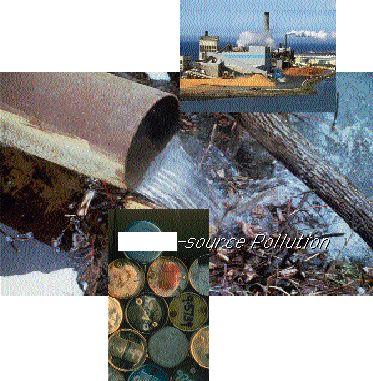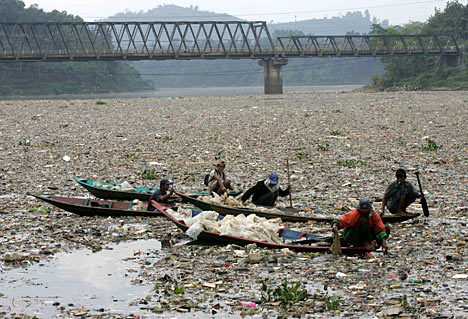How Well You Know About Water Quality? Trivia Quiz
(14).jpg)
How well do you know about water quality? Water condition can be thought of as a measure of the standards of water for a particular use. Water quality implies the chemical, physical, and biological elements of water-based standards of its usage. It adheres to an average of quality, which is achieved through the treatment of water. If you want to learn more about water quality, this is the quiz for you.
- 1.
Sources that discharge pollutants at specific locations through drain pipes, ditches, or sewer lines into bodies of surface water are called ____ sources? (Hint: Examples include factories, sewage treatment plants, underground mines, and oil tanker)
Explanation
Sources that discharge pollutants at specific locations through drain pipes, ditches, or sewer lines into bodies of surface water are called point sources. These sources are identifiable and can be traced back to a specific location or facility. Examples of point sources include factories, sewage treatment plants, underground mines, and oil tankers.Rate this question:
- 2.
Sources that are scattered and diffuse and cannot be traced to any single site of discharge are called ______ sources?
Explanation
Nonpoint sources refer to sources of pollution that cannot be traced back to a specific location or point of discharge. These sources are typically diffuse and scattered, making it difficult to pinpoint their exact origin. Examples of nonpoint sources include runoff from agricultural fields, urban areas, and construction sites, as well as atmospheric deposition. Unlike point sources, which have a specific discharge point, nonpoint sources contribute to pollution in a more widespread and dispersed manner.Rate this question:
- 3.
About what percent of people who live in developing countries do not have access to clean drinking water?
- A.
5%
- B.
10%
- C.
25%
- D.
36%
- E.
54%
Correct Answer
C. 25%Explanation
Approximately 25% of people living in developing countries do not have access to clean drinking water. This means that one-fourth of the population in these countries lacks access to safe and sanitary water sources. This is a significant percentage, highlighting the ongoing challenge of water scarcity and inadequate infrastructure in many developing nations. Access to clean drinking water is essential for maintaining good health and preventing waterborne diseases, making it a critical issue that needs to be addressed globally.Rate this question:
-
- 4.
According to a 2003 report by the World Commission on Water in the 21st century, half of the world’s 500 major rivers are heavily polluted.
- A.
False
- B.
True
Correct Answer
B. TrueExplanation
According to a 2003 report by the World Commission on Water in the 21st century, it was found that half of the world's 500 major rivers are heavily polluted. Therefore, the statement is true.Rate this question:
-
- 5.
How long does it take for contaminated groundwater to cleanse itself of degradable wastes?
- A.
1-2 weeks
- B.
1 month
- C.
6 months
- D.
20-50 years
- E.
Hundreds of Thousands of years
Correct Answer
E. Hundreds of Thousands of yearsExplanation
Groundwater can take hundreds of thousands of years to cleanse itself of degradable wastes. This is because the natural processes of biodegradation and dilution are slow in groundwater due to its low oxygen levels and limited microbial activity. Additionally, the movement of groundwater is slow, which further delays the cleansing process. Therefore, it can take an extremely long time for contaminants to fully degrade and for the groundwater to become clean again.Rate this question:
-
- 6.
An increase in biological productivity and ecosystem succession caused by human activities is called what?
Correct Answer
cultural eutrophication
eutrophicationExplanation
Cultural eutrophication and eutrophication are both terms used to describe an increase in biological productivity and ecosystem succession caused by human activities. Cultural eutrophication specifically refers to the excessive nutrient enrichment of water bodies due to human activities such as agriculture, sewage discharge, and industrial pollution. Eutrophication, on the other hand, is a broader term that encompasses both natural and human-induced nutrient enrichment in aquatic ecosystems. Therefore, both cultural eutrophication and eutrophication are correct answers to the question.Rate this question:
- 7.
Tertiary Treatment involves a biological process in which aerobic bacteria removes dissolved and biodegradable, oxygen-demanding organic wastes.
- A.
True
- B.
False
Correct Answer
B. FalseExplanation
Tertiary treatment does not involve a biological process with aerobic bacteria. Instead, it is a more advanced treatment process that removes any remaining contaminants from wastewater after primary and secondary treatments. This can include processes such as filtration, disinfection, and nutrient removal. Therefore, the statement is false.Rate this question:
-
- 8.
What are some effective solutions to groundwater treatment?
- A.
Finding substitutes for toxic pollutants
- B.
Reusing treated wastewater for irrigation
- C.
Reducing air pollution
- D.
Working with nature to treat sewage
- E.
All of the above
Correct Answer
E. All of the aboveExplanation
The correct answer is "All of the above" because all the mentioned solutions are effective in groundwater treatment. Finding substitutes for toxic pollutants helps in preventing the contamination of groundwater. Reusing treated wastewater for irrigation reduces the demand for fresh water, thereby conserving groundwater resources. Reducing air pollution is important as it can contribute to the contamination of groundwater through atmospheric deposition. Working with nature to treat sewage involves using natural processes like wetlands and soil filtration to remove pollutants from wastewater before it enters groundwater. Therefore, all these solutions contribute to effective groundwater treatment.Rate this question:
-
- 9.
Many Scientists believe that the greater threat to the ocean's overall ecological health is
- A.
eutrophication
- B.
Excess bacteria managing its way into the waters
- C.
Oil spills and oil well blowouts, especially in tropical waters.
- D.
Chronic, land-based pollution from industrial and agricultural runoff.
- E.
None of the above
Correct Answer
D. Chronic, land-based pollution from industrial and agricultural runoff.Explanation
Chronic, land-based pollution from industrial and agricultural runoff is considered a greater threat to the ocean's overall ecological health because it is a continuous and ongoing issue. This type of pollution includes the discharge of harmful chemicals, pesticides, fertilizers, and other pollutants into rivers and streams that eventually flow into the ocean. It can lead to water contamination, harmful algal blooms, loss of biodiversity, and disruption of marine ecosystems. Eutrophication, excess bacteria, and oil spills are also significant threats, but they are often more localized and have immediate impacts that can be mitigated or cleaned up.Rate this question:
-
Quiz Review Timeline +
Our quizzes are rigorously reviewed, monitored and continuously updated by our expert board to maintain accuracy, relevance, and timeliness.
-
Current Version
-
Mar 21, 2023Quiz Edited by
ProProfs Editorial Team -
Jun 07, 2009Quiz Created by
Oaktonapes
 Back to top
Back to top




